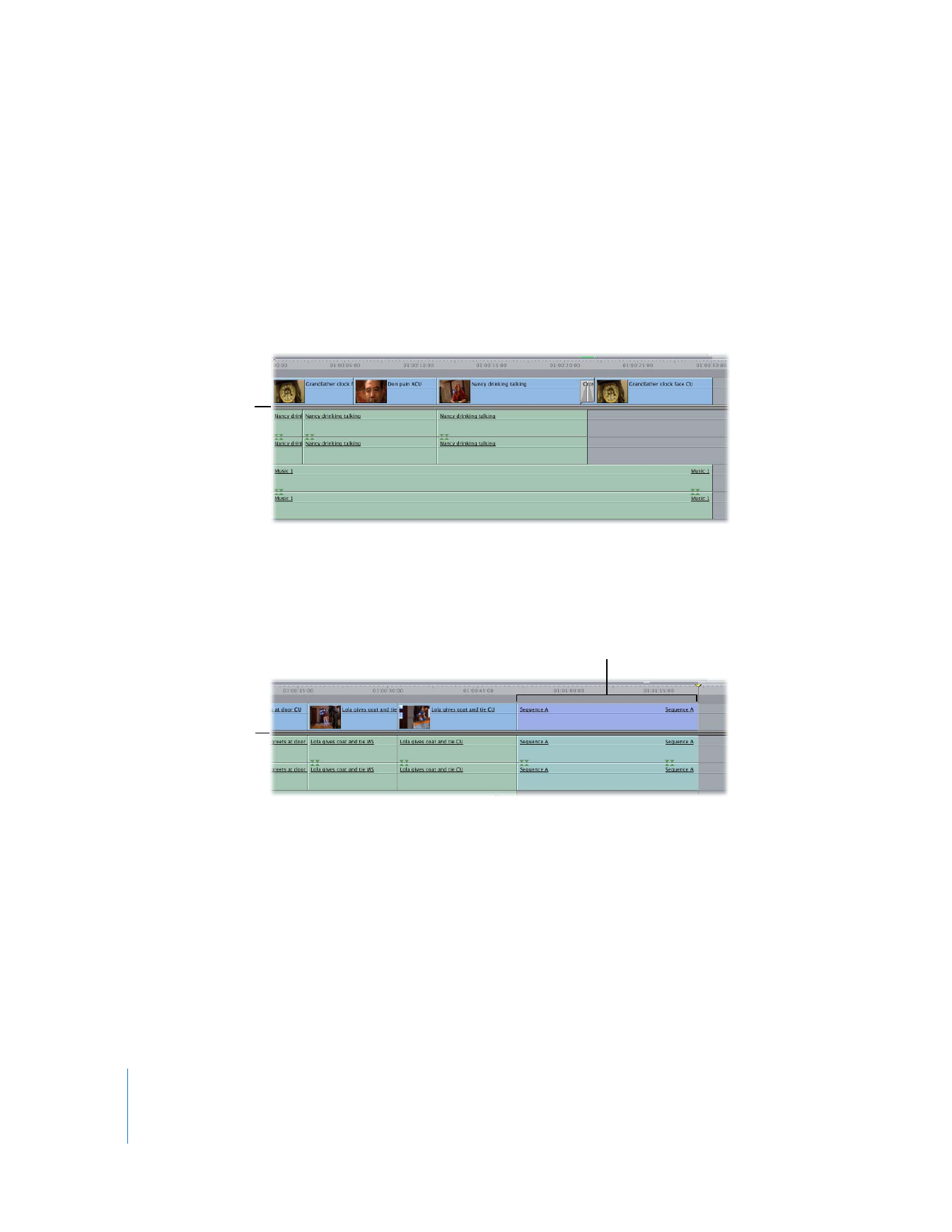
Changing the Duration of a Nested Sequence Ripples Clips
After the Nested Sequence
When you first nest a sequence into another sequence (sometimes known as the
parent sequence), changes in the original nested sequence that affect its duration are
reflected in the parent sequence. For example, if you shorten a clip in the original
nested sequence, the overall sequence duration changes. As a result, the duration of
the nested sequence within the parent sequence is also shortened, and the subsequent
clips in the parent sequence are rippled to compensate for the shorter
nested sequence.
This is quite helpful, since otherwise you’d end up with gaps in your parent sequence
whenever you change the length of one of your nested sequences. This is convenient
when each of your movie scenes is in a separate sequence. After you’ve edited all your
scenes together, if you decide to reedit any of the scene sequences, the changes you
make will automatically ripple items in the entire master sequence.
This nested sequence
replaces the selected
clips.

Chapter 23
Sequence-to-Sequence Editing
421
III
For example, suppose sequence B, which has a duration of 10 seconds, is nested inside
another sequence, with more clips appearing to the right of it.
You open sequence B and add two more clips to the end of it, extending its duration
from 10 to 15 seconds. Once you’ve done this, all of the clips in the parent sequence
that are to the right of the nested sequence B are automatically rippled 5 seconds to
the right to accommodate the lengthening of the nested sequence B.
Important:
If you modify a nested sequence duration in a parent sequence, or if you
specifically set In and Out points in a sequence before you nest it into a parent
sequence, the nested sequence may no longer ripple clips in the parent sequence
when you adjust content in the nested sequence.
Nested sequence B
inside another sequence
Adding clips to sequence B
ripples the parent sequence.

422
Part III
Fine-Tuning Your Edit